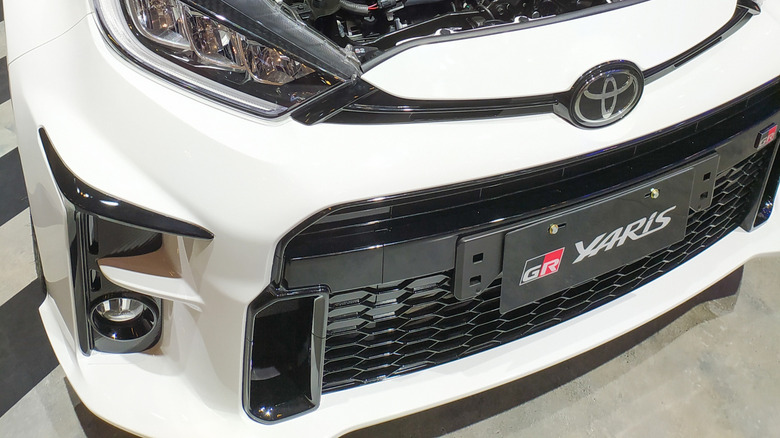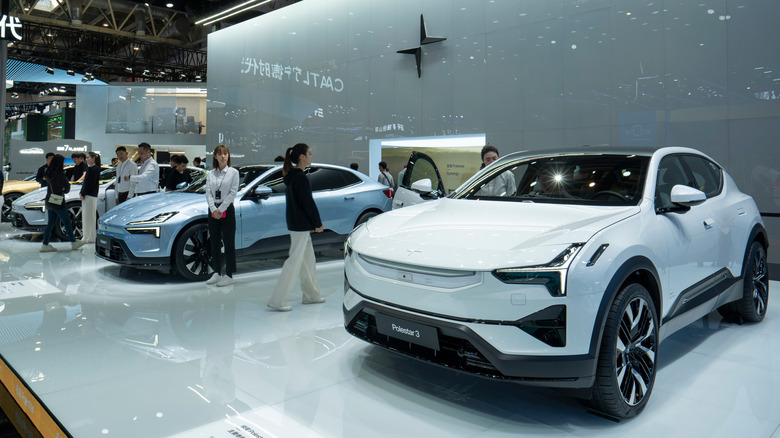Here's How Engine Emissions Rules Have Changed Car Design Forever
Since its introduction in 1886 by Karl Benz, the automobile has been a fundamental force that changed the world. From enabling economic growth, bridging distances, and accelerating the development of countries, cars have helped shape life as it is today. What's important to consider, however, is that automobiles also have their downside, including the harm it has caused the environment for the nearly 140 years of their existence.
Internal combustion engines have come a long way since the Benz Patent-Motorwagen, but even modern Hypercars that have internal combustion engines burn fuel and produce emissions. In a study conducted by Statista, worldwide emissions from passenger cars and vans totaled 3.53 billion metric tons for 2022 and are projected to be even higher in the future. Because of the growing air toxicity and contamination from motor vehicles, governments worldwide require car companies to design cars that will contribute less to air pollution.
In the United States, the Air Pollution Control Act of 1955 was enacted, which was followed by the Clean Air Act of 1963. By 1970, the first major Clean Air Act was ratified, which required a 90 percent emissions reduction from new automobiles by 1975. Other countries soon implemented their first emissions laws, first in Japan then in Canada, Australia, and several European nations. These stringent emissions rules have since impacted car designs, ensuring vehicles follow the guidelines of these laws, which is why cars today are less polluting and more efficient than ever before.
Smaller, sleeker and lighter
Smaller engines are a result of engine emissions regulations, as manufacturers shifted their focus toward down-sized, more efficient engines that achieve the same power. These smaller engines are equipped with turbocharging or supercharging technologies that create forced induction, meaning the engines get more power for less fuel burned, reducing emissions. A great example of engine downsizing is the Chevrolet Camaro; the top-of-the-line engine for the first-generation Camaro was a 6.5L V8 that only produced 325 horsepower, while the smaller, entry-level V6 engine of the modern Camaro can produce 335 horsepower.
Streamlining car designs became more widespread after emissions standards were imposed, too. By making cars sleeker, it greatly improves airflow, reduces wind resistance, and maximizes fuel efficiency. This design evolution is evident in how each successive generation of cars starting from the late '70s incorporated smoother, more rounded edges and more integrated panels and body parts. Comparing a 1970 Cadillac Eldorado to a 2025 Cadillac CT5, the difference in their design and appearance is clear in the roofline, facia, and beltline, showing the vast improvement in aerodynamics.
Another important advancement was the adoption of lighter materials. In order to save weight and improve fuel economy, carmakers shifted from traditional steel to lighter, stronger materials, including higher-strength steel, aluminum, carbon fiber, and plastic. A lighter car also has higher performance, better handling, and fewer emissions because the engine does not work as hard. The 1968 Ford Mustang Fastback Challenger and the 2020 Honda Civic are almost the same size, but the Civic has more parts, more seating, and more advanced equipment, yet is lighter at 2,771 pounds compared to the Mustang at 2,974 pounds.
Faster, cleaner, and better
The automotive industry continues to innovate in car design to meet mandated laws regarding emission standards. As a result, cars today are better designed to meet increasing environmental, safety, and sustainability requirements from the markets they sell to. Consumers themselves have shifted their preference towards greener cars, as seen from the yearly increases in hybrid and electric vehicles.
Additional laws, including the 1990 Clean Air Act, have improved or superseded previous regulations on emissions, and more measures to reinforce this will likely enacted in the future. From the private sector, manufacturers themselves have begun shifting away from gasoline engines, to more sustainable power sources, just like what Volvo, Ford, and Volkswagen intend to do by the 2030's.
As worldwide standards regarding emissions and pollution continue to become more rigorous and demanding, advancements in the way cars are made and how they work will continue. Beyond the advancements in technology, the enduring impact of enhanced car design is of greater significance, as both people and the environment have directly gained from cleaner and more efficient vehicles.


